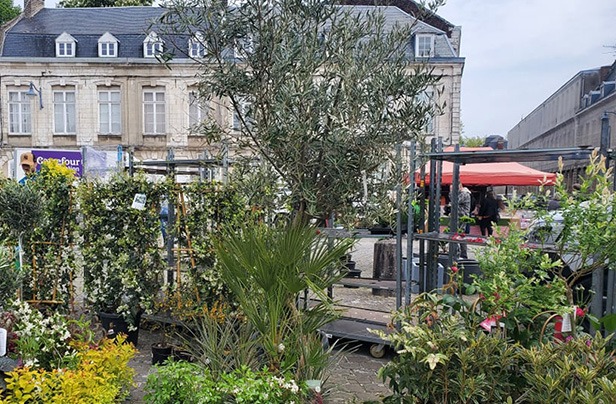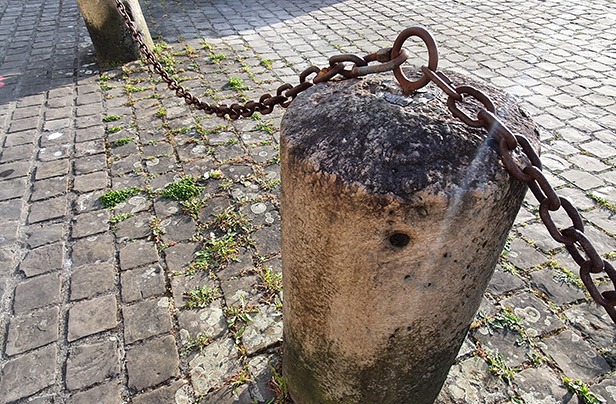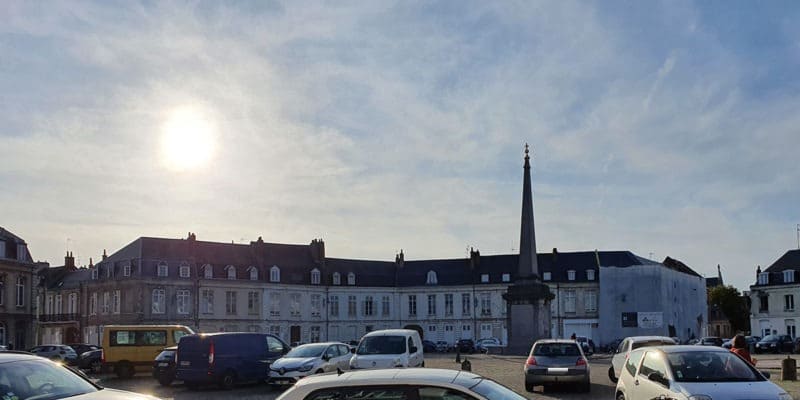Typical of 18th-century architecture, the Place Vitor Hugo in the center of the lower town was built on a marshy enclave known as the Pré Cagnon, where the Crinchon stream flows. Situated between the esplanade de la Citadelle, the Schramm barracks and the medieval city wall, Place Victor Hugo is unique in that it is octagonal in shape and hosts a flower market on May 1st each year. Here’s a closer look at one of Arras’ jewels.
The genesis and history of Place Victor Hugo
Designed by Pierre-Louis Beffara, an architect born in Saint-Céré (in the southwest of France) in 1712 and who died in Arras on April 8, 1776, Place Victor Hugo is part of a series of works designed to urbanize the town. Beffara, who became the city’s architect in 1757, wasn’t the only one involved in urban planning in the lower town at the time. With him, Louis Posteau and Adrien-François d’Huez formed a group of architects whose mission was to rethink the urbanization of these large areas of the former bishopric. The new district with its perpendicular streets was built around this square, and Beffara was also responsible for the creation of some fine private residences and the Palais épiscopal, which has since become the Préfecture du Pas-de-Calais.

May 1st Flower Market
Work begins
In 1751, the Crinchon was relocated, and excavated material from the former Saint-Vaast abbey and the old rampart was used to raise and stabilize the 18-foot (approx. 5.5-meter) ground. The earliest of the site’s subdivisions is attributed to the Marquis de Beauffort on May 21, 1754. The hotel adjacent to Place Victor Hugo is now the Collège Jehan Bodel. Rectilinear axes brought the bourgeoisie of the time to the square, whose center featured a fountain by Félix Fruit (note the lion heads that until recently spat out water) and an obelisk (by Posteau). The square has a diameter of 90 meters and a total surface area of 64 ares (6,400 square meters). Later, after the Revolution and in the 19th century, Place Victor Hugo became a lively part of the lower town. A livestock market was set up in 1821, and the sandstone bollards with the iron rings used to tie up the animals can still be seen today.  The market remained open until 1950, when it was moved to the abattoir. Many cafés were present here in the 20th century. By the turn of the millennium, only two cafés and one large restaurant remained. Today, only one establishment remains, a good brasserie that’s also a big draw.
The market remained open until 1950, when it was moved to the abattoir. Many cafés were present here in the 20th century. By the turn of the millennium, only two cafés and one large restaurant remained. Today, only one establishment remains, a good brasserie that’s also a big draw.
The geographical location of Place Victor Hugo
Theobelisk erected by Félix Fruit on the Place Victor Hugo, placed in the axis of the streets, is a useful landmark for walkers and locals alike. With a view of the Schramm barracks (via Cours de Verdun), Place de Marseille, the Lycée Robespierre and the Governor’s Garden (Boulevard Crespel) and, further on, the Belfry, it’s an ideal place to get your bearings and a good way to start a stroll through the streets of the historic town.
Parking is currently free.













X.D.
